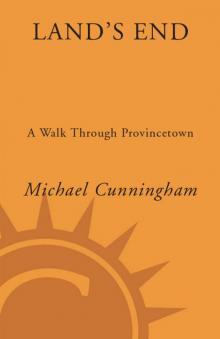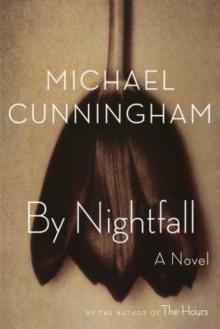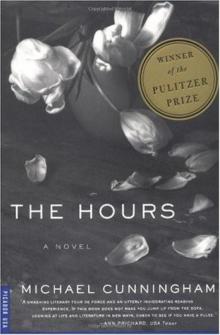- Home
- Michael Cunningham
Land's End Page 2
Land's End Read online
Page 2
When I left the theater, however, I learned that it was screening Gone With the Wind one more time, the following night, and then closing until May. The other two theaters had already closed for the season. All right, I thought. Who needs movies? I’ll read every night. I walked on and found a nice little bar where lean women in leather jackets played pool and a covey of men sat by the fireplace, laughing at jokes so familiar they barely needed to be told at all. I ordered a beer and learned from the bartender that the bar would be open until the end of the week and would then close until May.
Over the next few days it became apparent that the entire town, with the exception of essentials like the grocery and drug stores and, bless it, a courageous little bookshop, intended to close from early October until mid-May. There would be fewer and fewer tourists. There would soon be only, as I quickly learned, the handful of local residents, bundled against the increasingly cold weather, most of them vanished by nightfall except the town’s most visible disturbed person, a handsome, disheveled man who looked slightly scorched, as if he had just escaped from a fire, and who walked up and down Commercial Street all day and into the night, in the same dark jeans and flannel shirt, muttering ferociously into the gelid air. There would be two bars, both of which catered to fishermen, and one struggling vegetarian café. All right, I thought. No distractions. I’ll just write and read for seven months.
I did read, though restlessly and randomly—half of The Charterhouse of Parma, some Philip Roth, some Dorothy Sayers. I had trouble concentrating. I did not write, although I tried my hardest to. My bluff had been called. Given the ideal circumstances, a room of my own, free of distractions, I found I could not write at all. I stayed up late and slept as late as I could, but I had to wake eventually and face another empty day during which I would stare at my typewriter, put down and cross out a sentence or two, then walk along the bay and the empty street, past the boarded-up souvenir shops and the muttering man, until it was night and I could make dinner, start drinking, and read, or try to read. I bought an old black-and-white television set and watched it for hours and hours, with an addict’s hopeless pleasure, derived in part from my own willingness to let things slide. That winter I lost not only what felt like my last hold on optimism but my belief in optimism itself. At the end of my twenties, I believed I was being given an early tour of the old age home, one endless day followed by another, sleep the only conceivable reward. On one particularly bleak night in February, I sat on my scratchy plaid sofabed with a vodka in my hand, rocking slightly as the television droned, and promised that if I survived the next few months, I would leave Provincetown and not only never return but never again go to any human settlement with a population under one million.
And somehow, in the end, I fell in love with Provincetown, the way you might meet someone you consider strange, irritating, potentially dangerous but whom, eventually, you find yourself marrying. I stayed for the summer, after my fellowship ran out, working in a bar—I had once again gotten myself to a remote place with no money and no obvious next move. I went to New York in the fall, liked New York, but found to my surprise that I missed Provincetown, against my will, the way you begin to recognize the early symptoms of love or the flu. Certain images had taken up particularly stubborn residence in my mind. There had been a moment in mid-December, at dusk, at the far west end of town, where the street dead-ends at a salt marsh and curves back on itself, attended only by an illuminated telephone booth, a perfect box of wan yellow light against the black-green marsh and the purpled sky. I had stood and watched that rectangle of light and the marsh behind it as if they contained some beauty too final and bleak to articulate. A month or so later I had watched a great silver barge of a nocturnal cloud moving serenely across the frozen stars as I stood shivering at the end of a pier, trying and failing to cry, staring at the green light on Long Point and hearing the foghorn blow its bassoon note over and over again—come home, child, the ice mother is waiting for you, and she doesn’t need you to strive or accomplish, she only wants you to sleep. Provincetown had offered its demonstrations of frigid, off-season grandeur, and then it had offered the spring thaw, when people began to appear on the streets again, more of them every weekend. The salty silence dissipated; smells of popcorn and fried food stirred themselves up. Music sifted out of the bars, and the town began to fill with the possibility of sex. I took all that with me to New York. As I walked the streets of New York, I began to wonder if, for the first time in my life, I had been reduced that winter to so little that I could see the dreadful, rock-hard opulence of the world, that which remains when idealism and sentimentality have fallen away. Provincetown in its winter desolation and its subsequent, temporary revival came to seem more real, or at least more trustworthy, than any other place I’d ever been. It began to feel (though I’d never have used this word then) like home.
I went back the following summer, telling myself I was going only to make money and have sex. I fell in love with a handsome, highly dramatic man who owned a café on the East End. I insisted I couldn’t ever live in Provincetown again, but ultimately moved there to live with him. Several years later I left him but kept coming back to the town.
Now I go there every chance I get. Kenny, the man with whom I live, and I have bought a house on the East End. If I die tomorrow, Provincetown is where I’d want my ashes scattered. Who knows why we fall in love, with places or people, with objects or ideas? Thirty centuries of literature haven’t begun to solve the mystery; nor have they in any way slaked our interest in it.
Provincetown is a mysterious place, and those of us who love it tend to do so with a peculiar, inscrutable intensity. With this book I hope to offer neither more nor less than the story of my own particular devotion, with the understanding that my Provincetown differs profoundly from the Provincetown of others. It is not a place that inspires objectivity—even its history is as much speculation and rumor as it is recorded fact—and the Provincetown you get from me, aside from certain particulars of geography and weather, will not resemble the Provincetown you would get from the head librarian, from the native-born fisherman who still struggles to make a living from the depleted waters of the North Atlantic, or from the woman who moved there twenty years ago to live as much apart from men as she possibly could. This book is a little plastic cup with a clamshell in it, found in the tidal shallows, raised in slightly bewildered homage as the boats in the harbor shine like ghosts.
LONG POINT LIGHT
Long Point’s apparitional
this warm spring morning,
the strand a blur of sandy light,
and the square white
of the lighthouse—separated from us
by the bay’s ultramarine
as if it were nowhere
we could ever go—gleams
like a tower’s ghost, hazing
into the rinsed blue of March,
our last outpost in the huge
indetermination of sea.
It seems cheerful enough,
in the strengthening sunlight,
fixed point accompanying our walk
along the shore. Sometimes I think
it’s the where-we-will-be,
only not yet, like some visible outcropping
of the afterlife. In the dark
its deeper invitations emerge:
green witness at night’s end,
flickering margin of horizon,
marker of safety and limit.
But limitless, the way it calls us,
and where it seems to want us
to come. And so I invite it
into the poem, to speak,
and the lighthouse says:
Here is the world you asked for,
gorgeous and opportune,
here is nine o’clock harbor-wide,
and a glinting code: promise and warning.
The morning’s the size of heaven.
What will you do with it?
MARK DOTY
&
nbsp; Wilderness
ALTHOUGH THE DESKS in the schools are no longer half buried in sand, and sand-drifts no longer pile up against the walls of houses, Provincetown is still thoroughly infiltrated by its skittish, sandy wilderness. Auto body shops stand in the shadows of dunes; the waterfront houses are built directly on sand and have shells and beach grass where their inland sisters would have lawns. There is no place where you can’t hear the foghorn. The wilderness offers escape from the noise and commerce; town offers at least partial sanctuary from the abiding patience out there, that which sifts through your windows at night and will be there long after you are gone.
In a sense Provincetown is a beach. If you stand on the shore watching the tide recede, you are merely that much closer to the water and that much more available to weather than you would be in the middle of town. All along the bay side, the entire length of town, the beach slopes gently, bearded with kelp and dry sea grass. Because Provincetown stands low on the continental shelf, it is profoundly affected by tides, which can exceed a twelve-foot drop at the syzygy of sun, moon, and earth. Interludes of beach that are more than a hundred yards wide at low tide vanish entirely when the tide is high. The water of the bay is utterly calm in most weathers and warmer than that of the ocean beaches, but this being the North Atlantic, no water anywhere is ever what you could rightfully call warm, not even in August. Except in extreme weather the bay beach is entirely domesticated, the backyard of the town, never empty but never crowded, either; there is no surf there, and the water that laps docilely up against the shore is always full of boats. The bay beach is especially good for dogs and small children, whose only other access to large, untrammeled space is the playing field of the high school on the hill. The bay beach is also good for strolling along in solitude, which is most satisfying, to me, on clear winter days, when the air is almost painfully sharp and scraps of snow linger on the sand. The beach is strewn with shells, but they are New England shells, almost exclusively bivalves, running from gray to brown to lighter brown with minor hints of mauve or deep, dusty purple. This is not a marine landscape prone to pinks or pale blues. The beach does yield the occasional treasure, an old clay pipe or a whole glass bottle that the ocean has turned opalescent. Paul Bowen, a sculptor who combs the beaches incessantly, has even found a few porcelain dolls’ heads, arms, and legs over the years, and I always walk along that section hoping to see a tiny white face, half buried in sand, offering prim scarlet lips and one empty blue eye from among the stones and shards.
LONG POINT
The remotest end of the sandy spiral on which Provincetown stands—the very tip of the Cape’s languidly unfurling hook—is called Long Point, a narrow scrap of dunes and grass. It is tentatively part of the mainland, but centuries ago the ocean dissolved most of the scrawny neck of sand that connected it. There is now a jetty that attaches Long Point to the far West End, built in 1911. In the 1700s, though, when Long Point was essentially an island, a community started up there, and eventually it grew to about two hundred people, most of whom operated salt works, where sea water was evaporated for salt. Everything these citizens needed, everything the Atlantic didn’t provide, was brought over by boat from Provincetown proper.
During the War of 1812 the British occupied Provincetown and cut off supplies to the people on Long Point. When the Civil War broke out, the people of Provincetown, fearing that the Confederate Army would invade and set up a similar blockade, built two fortresses of sand on Long Point, with a cannon in each. The Confederates never came anywhere near Provincetown, however, and as volunteers stood guard day after day and night after night over an uncontested stretch of salt water, the fortresses came to be known as Fort Useless and Fort Ridiculous.
Before the Civil War, toward the middle of the 1800s, the citizens of Long Point began to feel that they’d made a mistake in settling there at all. Their houses were almost flirtatiously available to gales and hurricanes, their salt wasn’t selling as it once had, and the notion that every egg, darning needle, or pair of socks had to be ordered and delivered by boat had lost its charm. So they had their houses, forty-eight of them, jacked up, loaded onto barges, and floated over to the mainland. Most of the old houses in Provincetown, being built on sand, had no foundations at all and could be moved from one place to another without much more difficulty than what would be involved in transporting a drydocked boat across land. On the mainland houses perched at the tops of dunes were known sometimes to work their way down slowly, over the years, until they rested at the feet of the dunes they had once crested.
The houses that were floated over from Long Point still stand, mostly in the West End of Provincetown, though there are a few in the East End as well. Each of them bears a blue plaque, with a picture of a house on a barge floating calmly over white squiggles of unprotesting waves.
At the tide’s lowest point you can walk to Long Point from the West End, over the expanse of wet sand. You can walk there, regardless of the tides, across the jetty that starts at the far west end of Commercial Street. The jetty is a thirty-foot-wide ribbon of rough granite blocks that extends almost to its own vanishing point when you stand on the mainland looking out to Long Point. You may want to walk all the way to the point, or you may just want to go partway out and sit on the rocks for a while. In summer, an hour or so before high tide, when the water is moving in, you can slide in from the rocks and let yourself be carried along by the tide, almost all the way back to shore.
If you do walk to Long Point, you will find yourself on a spit of sand about three hundred yards wide, with bay beach on one side, ocean beach on the other, and a swatch of dune grass running down the middle. It sports, like an austere ornament, a lighthouse and a long-empty shed once used to store oil for the light. You will be almost alone there, though the water around you will be thoroughly populated by boats. It is a favorite nesting ground for terns and gulls. When I went out there years ago with Christy, the man with whom I lived then, he strode into the dune grass and stirred up the birds. If I tell you that he stood exultantly among hundreds of shrieking white birds that circled and swooped furiously around him, looking just like a figure out of Dante, grinning majestically, while I stood by and worried about what it was doing to the birds, you may know everything you need to know about why we were together and why we had to part.
THE SALT MARSH
Just beyond the jetty, past the hairpin curve Commercial Street makes as it turns back on itself and changes its name to Bradford Street, is the salt marsh. The long road that starts at the landward end of Cape Cod ends here, at this wild lawn of sea grass. The marsh reliably tells the time, the state of the weather, and the season: emerald in spring and summer, gold in fall, various browns in winter. Wind when it blows raises flashes and swells of paler color among the grasses and reeds, so you can stand at the edge of the marsh and see just how strongly the wind is blowing, and in what direction. Because the marsh is always at least partly flooded, reflected sky lights the grass from below. On sunny days it can seem unnaturally bright, and on cloudy days it looks even brighter.
It is puddled during low tides, inundated when the tide is high. It terminates in a range of dunes, beyond which is the ocean, though you can’t see it from where you now stand. You may see a heron or two, wading among the tidal pools. You will assuredly see the little white thumb of Wood End lighthouse, far away. (It is not the one on Long Point.) I’ve never gone there and don’t intend to. I know—or rather, I can imagine—that up close it’s merely an old plaster tower, its paint cracked and peeling, spattered all over its concrete base with seagull shit. I prefer that it remain a distant object, its romance undiluted, an image out of Virginia Woolf. I believe every city and town should contain at least one remote spot, preferably a beautiful and mysterious one, that you see but never visit.
HERRING COVE
Herring Cove is one of Provincetown’s two official public beaches. The other is Race Point. Herring Cove is the nearer of the two to town—you can walk or bi
ke there. In summer, the town loop bus will take you there for free. From the salt marsh it’s about a half mile to the official public entrance, with its parking lot and snack bar, but my preferred point of ingress is the nearer one, across the dunes.
Go north from the salt marsh, past a small, murky lagoon to the right of the road, into a stand of trees, and stop where you see all the bicycles parked. There’s an unambiguous entrance there, between the trees.
It takes about fifteen minutes to get to the beach. You will find yourself in tidal flats, with high dunes on either side and the curving wall of dunes that line the ocean straight ahead. You may see the masts and upper deck of a boat sailing by, and that is a good if slightly surreal sight, a half-boat skimming placidly along over the sand.
There is a vague but discernible path, and you should stay on it. The landscape is fragile—it does not respond well to footsteps. If you’re walking out at low tide, the sand will be mostly dry, dotted here and there with clear pools. If you’re walking out at high tide, you will have to wade. If you go there in late afternoon or early evening, the dunes will glow with a pink-orange light like the inside of a conch shell.

 The Hours
The Hours Land's End: A Walk in Provincetown
Land's End: A Walk in Provincetown Golden States
Golden States A Wild Swan
A Wild Swan A Home at the End of the World
A Home at the End of the World Flesh and Blood
Flesh and Blood Specimen Days
Specimen Days Land's End
Land's End By Nightfall
By Nightfall Hours
Hours